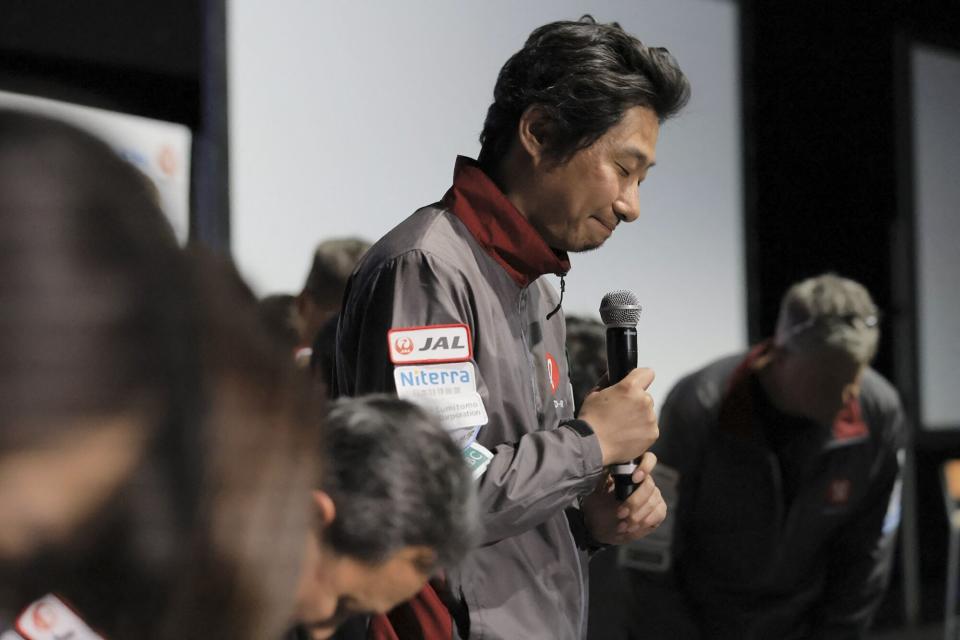Japan Spacecraft Believed to Have Crashed on Moon During Landing

(Bloomberg) -- Tokyo-based Ispace Inc. said it lost contact with a lander bound for the moon and that the craft, which didn’t have anyone on board, likely crashed, a big setback for the company’s efforts in space transportation and Japan’s push into the cosmos more broadly.
Most Read from Bloomberg
Ispace’s Hakuto-R Mission 1 lander was scheduled to touch down early Wednesday morning Japan time, in what would have been among the very first commercial space attempts to place a lander on the moon intact. But communication was lost shortly after engineers confirmed the lander was in a vertical position on the final approach.
“It has been determined that there is a high probability that the lander eventually made a hard landing on the moon’s surface,” Ispace said in a statement. Ispace’s shares nose dived in off-market trading, plunging 20%.
Facing the media later on Wednesday morning, Ispace executives were putting on a brave face, painting the failed landing as something of a victory.
“While the lander wasn’t able to reach the final step, we’re the first private company to collect data from an attempted lunar landing,” Chief Executive Officer Takeshi Hakamada said. “Data that will greatly help us in our preparations for Missions 2 and 3.”
High Emotions
Hakamada said in an earlier statement that Ispace would continue to work on future missions, despite the mishap. “What’s important is to feed this knowledge and learning back to Mission 2 and beyond so that we can make the most of this experience,” he said.
Chief Technology Officer Ryo Ujiie was more emotional. Explaining to reporters in detail what likely happened to the lander based on telemetry and simulations, he started to cry. Reading all the headlines after the live-streaming event, he said, it dawned on him just how many people were watching.
“I’m just happy to be part of this,” Ujiie said. “We weren’t able to land, but what we did achieve is important.”
Ispace launched its lander in December aboard one of Elon Musk’s SpaceX Falcon 9 rockets. It entered lunar orbit in March and was carrying two rovers and other payloads.
The company publicly listed its shares on the Tokyo Stock Exchange earlier this month. Hakamada is the second-largest shareholder with a stake of about 15%.
Very Difficult
Ispace is one of several companies hoping to place the first commercial lander on the moon’s surface. Two US firms, Houston-based Intuitive Machines Inc. and Pittsburgh-based Astrobotic Technology Inc., have uncrewed missions planned for later this year.
While Wednesday’s outcome disappointed investors, analysts were more measured.
“What they were trying to do was very difficult,” Kirk Boodry, an analyst at Astris Advisory in Tokyo, said. “In hindsight, this was a very realistic outcome, that has to be kept in mind.”
Boodry said the focus for Ispace as a company would now revert to “whether they have a viable business model, whether they can monetize the data and the experience that they’ve built up so far in sending this vehicle that distance. And of course, whether they’ll be able to succeed with another mission.”
He added the shares were “probably overbought going into this.”
Google Prize Contender
Officially formed in 2010 to compete in the Google Lunar X Prize, Ispace has said it wants to create a lunar settlement by 2040. It plans to make money by delivering equipment and goods to and from the moon.
Ispace also has partnered with the US-based Charles Stark Draper Laboratory, which holds a $73 million contract with NASA to deliver a suite of the agency’s payloads to the lunar surface in 2025, a small part of NASA’s Artemis program to return astronauts to the moon.
Only governments and superpowers have been able to successfully land vehicles on the moon. The Israeli nonprofit SpaceIL, another Google Lunar X Prize team, tried in 2019 to place the first privately funded lander on the moon, but the spacecraft came in too fast and also crashed on the surface.
Ispace did “accomplish quite a bit,” Chad Anderson, founder and managing partner of Space Capital, an investor in several space companies but not Ispace, said in an interview with Bloomberg TV. “It sounds like they got data all up until right before they hit, so they have a lot of really great data that’s going to support their future missions.”
Japan’s space efforts have experienced several setbacks recently.
The Japan Aerospace Exploration Agency’s H3 rocket, designed and manufactured by Mitsubishi Heavy Industries Ltd. to meet growing demand for rockets with large payload capacity, failed to launch once in February after a system malfunction kept it grounded, and again in March when a self-destruct order was sent mid-flight after its second-stage booster failed to ignite.
US President Joe Biden and Japanese Prime Minister Fumio Kishida announced last May that their countries would work together to put the first Japanese astronaut on the moon. A dearth of young astronauts led the Japanese space agency in February to recruit two civilians, a Red Cross surgeon and a World Bank senior employee.
--With assistance from Graham Starr and Bruce Einhorn.
(Adds analyst commentary from 13th paragraph. An earlier version corrected the caption of first video.)
Most Read from Bloomberg Businessweek
At Charles Schwab, Being a Big Bank Has Become a Big Problem
Good Luck Paying for Those $10,000 Obesity Drugs Everyone’s Talking About
©2023 Bloomberg L.P.

 Yahoo Finance
Yahoo Finance 